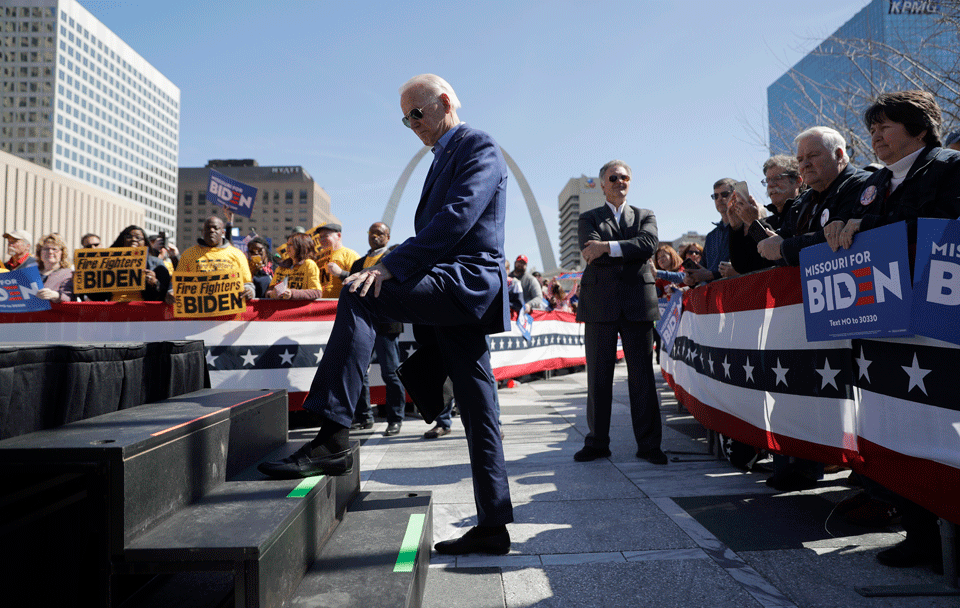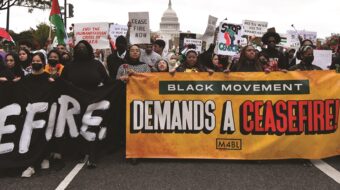
We shall not lose heart, no matter which turn history takes, but we shall not allow history to take a turn without our participation. — V.I. Lenin
Like all national and global crises, the COVID-19 pandemic and economic implosion will profoundly change people, work, and society generally. The only question is, how much?
Other great crisis moments in U.S. history, like the Civil War, the Great Depression, and the Civil Rights and anti-Vietnam war upsurges of the 1960s, resulted in a social transformation. Opposing class and social forces entered the fray, battled to shape the outcome, bringing about economic, political, and social realignments, and even, in the case of slavery’s abolition, revolutionary change.
Some figures rise unexpectedly to play important and decisive roles in the drama, often overcoming constraints imposed by their class and political backgrounds. They include the likes of Abraham Lincoln and Franklin Delano Roosevelt. Both evolved in response to events. Lincoln initially opposed the abolition of slavery but delivered the Emancipation Proclamation. Roosevelt was a patrician who “saved capitalism” by presiding over passage of the New Deal legislation.
One could add Lyndon B. Johnson to this list, who shepherded the Great Society programs, Civil Rights and Voting Rights legislation, and the landmark Immigration and Nationality Act of 1965 through Congress. However, his presidency was forever marred by the genocidal debacle in Vietnam.
Today’s transformative moment
Humanity has arrived at a new turning point. We face intersecting, interlocking, and unsustainable crises: climate and ecological existential threats, extreme wealth concentration, social inequality, militarization, the nuclear war danger, technological displacement, global pandemics, and the assault on democracy and the role of government for the common good.
The COVID-19 pandemic is aggravating and accelerating economic and social processes, exposing and sharpening the deep systemic contradictions, vulnerabilities, and inequalities of global capitalism and its brutal, ruthless nature.
Alliances of class and social forces uniting around a coincidence of interests drove developments during the Civil War, the Great Depression, and the Civil Rights era to achieve historical tasks. The scale of transformations in no small measure depended on the unity of these alliances and the strength and breadth of democratic and radical movements.
Today’s turning point moment is no different. The epic battle against the extreme right and fascist danger is occurring under new conditions. Still, the battle lines remain the same: a broad democratic upsurge in alliance with a section of Wall Street gathered in and around the Democratic Party against the extreme right, fascist fringe, and support base of reactionary billionaires gathered in the GOP.
The pandemic and economic crisis are changing just about everything, impacting the mass democratic movements, various constituencies, and forces linked to the Democratic Party. Joe Biden, the presumed presidential nominee, is also changing. He has gone from calling for a “return to normalcy” to advocating for “real structural” change.
As the crisis has deepened, Biden, and the Democratic Party as a whole, have evolved and adopted a more progressive governing agenda. He and the Democratic leadership recognize the scale of the crisis and festering problems of inequality, calling for solutions “not just to rebuild the economy, but to transform it.”
Biden is not proposing reforms to do away with capitalism. If he wins, Biden increasingly envisions a “crisis presidency” in the mold of FDR during the Great Depression and the global fight against fascism, a radically expanded role for government to effect significant changes in economic and social life.
As the New York Times reported,
“Democratic leaders say that if they hold power next January, they must be prepared to move to pump trillions more into the economy; enact infrastructure and climate legislation far larger than they previously envisioned; pass a raft of aggressive worker-protection laws; expand government-backed health insurance and create enormous new investments in public-health jobs, health care facilities, and child care programs.”
Biden’s evolution reflects broad shifts in the electorate, including centrist forces within the Democratic Party. As the crisis deepens, a significant part of our multi-racial working class and people are increasingly expecting the government to do much more to address their dire economic straits. And upon reflection, many former members of the Obama administration concluded the 2009 federal stimulus fell far short of what was needed during the financial crisis, a mistake they vow not to repeat.
“I think it’s probably the biggest challenge in modern history, quite frankly. I think it may not dwarf but eclipse what FDR faced,” Biden told CNN’s Chris Cuomo.
Left-center unity
The Biden campaign also understands the urgency to build Democratic Party unity to defeat Trump and the GOP. And just as Roosevelt responded to and allied with the left and democratic mass upsurge in the 1930s-’40s, Biden is responding to, engaging, and allying with today’s upsurge.
To unite the Democratic Party coalition, Biden reached out to Bernie Sanders, Elizabeth Warren, and Stacey Abrams, among others, and incorporated elements of their programs into his agenda. The mass democratic and left movements, including the Sanders campaign, have been the most dynamic part of the Democratic Party electoral alliance. They have been instrumental in helping shape public opinion over the past decade through grassroots and electoral activism.
Engaging the left progressive forces is an important shift for Biden. In the past, dominant center forces generally took the progressive wing for granted. As Rahm Emanuel often said, the left and progressive movements have “no place else to go.”
According to the Times, Biden has also held conversations with a wide array of progressive organizations and labor unions to develop policy. These forces are meeting independently to craft and push a progressive agenda, even during a Biden presidency.
When Sanders endorsed Biden, the two announced a collaboration to establish six “task forces” with leading activists from both campaigns to find common ground on major issues. Each task force has two co-chairs, one appointed by each campaign. For example, Biden asked Rep. Alexandria Ocasio-Cortez and John Kerry to co-chair the climate change task force, which includes Sunrise Movement co-founder Varshina Prakash.
During his endorsement of Biden, former President Barack Obama noted, “the world has changed,” and said the platform he ran on in 2008 is outdated. Bold new solutions are required. Biden, he said, already has the most progressive platform of any major-party nominee in history.
“Because even before the pandemic turned the world upside down, it was already clear we needed real structural change,” Obama said. “The vast inequalities created by the new economy are easier to see now, but they existed long before this pandemic hit…. And that includes the next generation who are graduating into unprecedented unemployment. They’re going to need economic policies that give them faith in the future.”
Some Biden proposals include:
-
Total student debt relief for graduates of two and four-year public universities, historically black colleges and universities, and Minority Service Institutions, as well as tuition-free community college.
-
Expanding Obamacare to include the public option and Medicare eligibility beginning at age 60.
-
The Green New Deal as a framework to address the climate crisis and environmental justice. Calls for rejoining Paris Climate Accords and elevating the role of science.
-
Creating millions of jobs through a green infrastructure bill and rebuilding the U.S. manufacturing base.
-
Even before the pandemic, Biden was proposing a $4 trillion tax on the wealthy, the most massive transfer of wealth.
-
Endorsing Elizabeth Warren’s plan to reform the Federal Bankruptcy Law.
-
Biden was an original co-sponsor of the original Employee Free Choice Act and supports union recognition if a majority of workers sign authorization cards. Also being discussed is a universal minimum wage and guaranteed jobs program.
Lawrence Michel, past president of the Economic Policy Institute, said Biden’s labor agenda was “beyond my hopes,” adding he could not recall a Democratic nominee in his lifetime who presented “as robust and fleshed out a policy suite on labor standards and unions.”

By shattering the GOP majority in the U.S. Senate, Biden, the Democrats, and mass democratic movements will have a lot more leeway to pass such “big structural change” legislation.
The left-center unity around these issues doesn’t mean sharp differences won’t arise, including and especially on foreign policy issues. The transnational corporations, foreign policy establishment, and the military-industrial complex have traditionally shaped the U.S. approach to international affairs. But even foreign policy, including military spending, can be impacted by mass democratic movements.
At this point, it’s not possible to say how far the transformative changes can go. That depends on the biggest voter mobilization ever, establishment of a new post-election political landscape, the unity of the anti-right alliance, the consciousness and activism of millions, and the strength of the democratic mass movements.












Comments